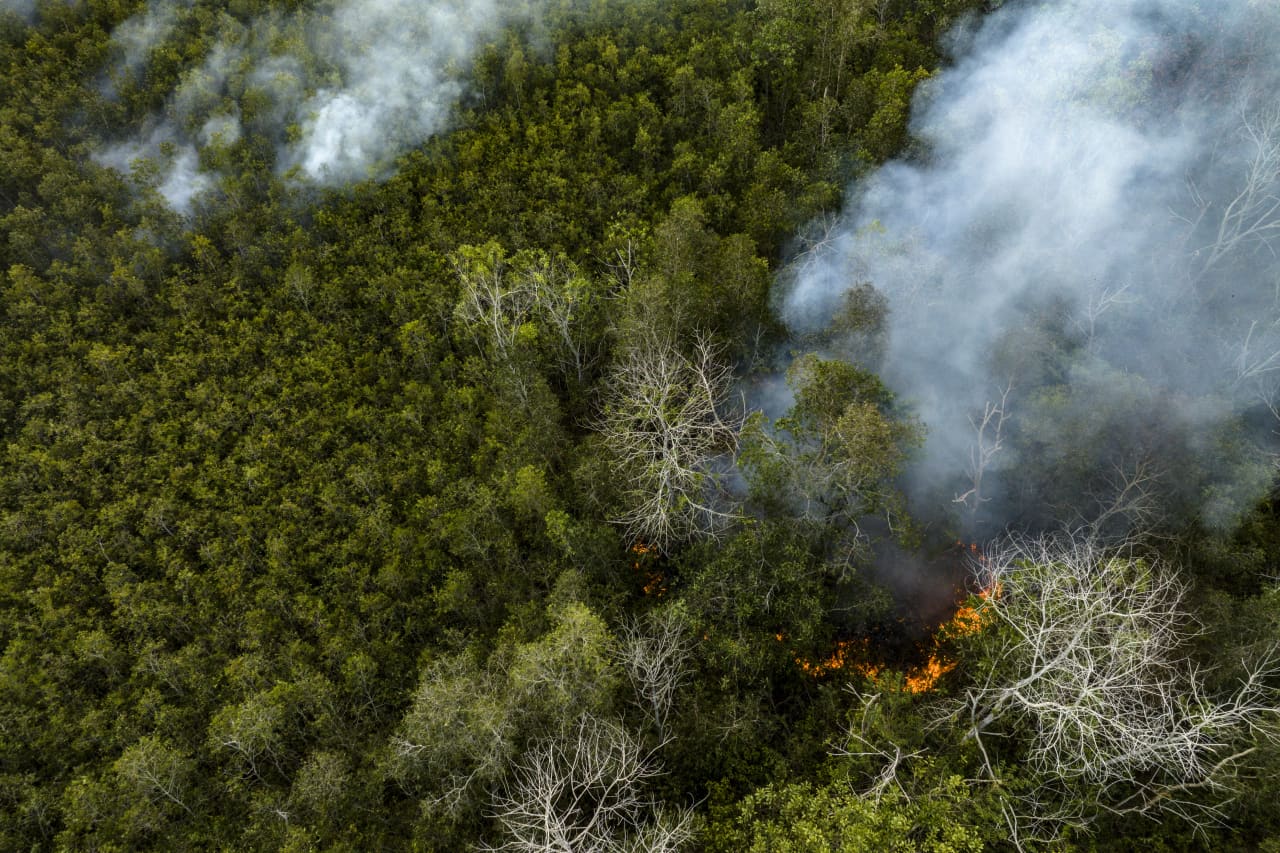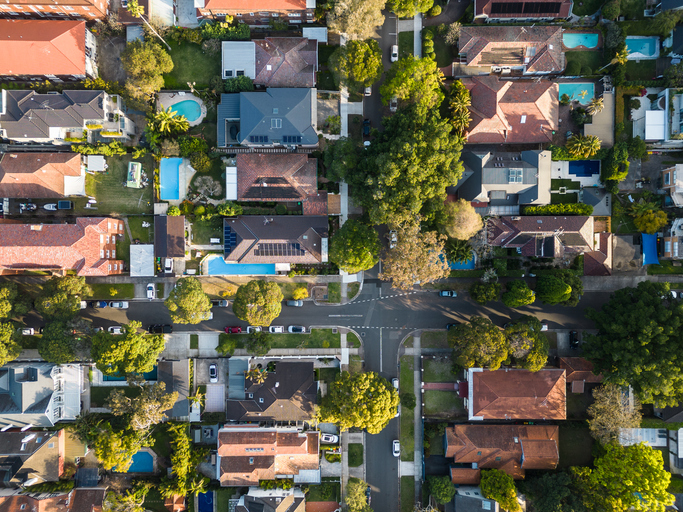Investing in Nature Is Gaining Traction. Will It Be Enough?
Investing in nature to address climate change, support biodiversity, and protect ocean health—and more—is expected to reach record levels this year in response to more regulation and market demand, according to Cambridge Associates, a global investment firm.
Still, the amount of private capital invested to support natural systems will fall far short of what’s needed, according to the annual “State of Finance for Nature” report published in December from the United Nations Environment Programme.
A big reason is that nearly US$7 trillion in public and private finance was directed to companies and economic activities in 2022 that caused direct harm to nature, while only US$200 billion was directed to so-called nature-based solutions, or NbS—investments that protect, conserve, restore, or engage in the sustainable management of land and water ecosystems, as defined by the United National Environment Assembly 5, or UNEA5, the report said.
“Without a big turnaround on nature-negative finance flows, increased finance for NbS will have limited impact,” it said.
But the report also said that the misalignment “represents a massive opportunity to turn around private and public finance flows” to meet targets set by the United Nations Rio Conventions on climate change, desertification, and biodiversity loss.
The conventions aim to limit climate change to 1.5 degree Celsius above pre-industrial levels, protect 30% of the earth’s land and seas by 2030, and to reach “land degradation neutrality” by 2030. Reaching those goals will require more than double the amount of current levels of nature-based investing by 2025, to US$436 billion, and nearly triple today’s levels to US$542 billion by 2030, the report said.
Most of the US$200 billion invested in NbS today is by governments, but private investors contributed US$35 billion—including US$4.6 billion via impact investing funds and US$3.9 billion via philanthropy. The largest source of private finance was in the form of biodiversity offsets and credits. [An offset is designed to compensate for biodiversity loss, while a credit is the asset created to restore it].
Many wealthy individuals and families concerned about climate change and the environment so far have focused their investment dollars on climate solutions and innovations in technology and infrastructure, or in technologies supporting food and water efficiency, says Liqian Ma, head of sustainable investment at Cambridge Associates.
But “increasingly there is growing awareness that nature provides a lot of gifts and solutions if we prudently and responsibly manage nature-based assets,” Ma says.
Investments can be made, for instance, in sustainable forestry and sustainable agriculture—which can help sequester carbon—in addition to wetland mitigation, conservation, and ecosystem services.
“Those areas are not in the mainstream, but they are additional tools for investors,” Ma says.
Finance Earth, a London-based social enterprise, is among the organizations working to make these tools more mainstream by creating a wider array of nature-based solutions in addition to related investment vehicles.
Finance Earth groups nature-based solutions into six themes: agriculture, forestry, freshwater, marine/coastal, peatland, and species protection. Supporting many of these areas are an array of so-called ecosystem services, or benefits that nature provides such as absorbing carbon dioxide, boosting biodiversity, and providing nutrients, says Rich Fitton, director of Finance Earth.
Each of these ecosystem services are behind existing and emerging markets. Carbon-related disclosure requirements (at various stages of approval in the U.S. and elsewhere) have long spurred demand for carbon markets, the most mature of these markets.
Cambridge Associates, for instance, works with dedicated asset managers who have been approved by the California Air Resources Board to buy carbon credits, Ma says.
In its annual investment outlook, the firm said California’s carbon credits should outperform global stocks this year as the board is expected to reduce the supply of available credits to meet the state’s emission reduction targets. The value of these credits is expected to rise as the supply drops.
In September, the G20 Task Force on Nature-Related Financial Disclosures released recommendations (similar to those put forward several years ago by the Task Force for Carbon-related Financial Disclosure) that provide guidance for how companies can look across their supply chains to assess their impact on nature, water, and biodiversity “and then start to understand what the nature-related risks are for their business,” Fitton says.
The recommendations will continue to spur already thriving biodiversity markets, which exist in more than 100 countries including the U.S. In the U.K., a new rule called “Biodiversity Net Gain” went into effect this month requiring developers to produce a 10% net gain in biodiversity for every project they create.
Though developers can plant trees on land they’ve developed for housing, for example, they also will likely need to buy biodiversity credits from an environmental nonprofit or wildlife trust to replace and add to the biodiversity that was lost, Fitton says.
This new compliance market for biodiversity offsets could reach about £300 million (US$382 million) in size, he says.
Finance Earth and Federated Hermes are currently raising funds for a U.K. Nature Impact Fund that is likely to invest in those offsets in addition to other nature-based solutions, including voluntary offset markets for biodiverse woodlands and for peatlands restoration.
The fund was seeded with £30 million from the U.K. Department for Environment, Food and Rural Affairs—money that is designed to absorb first losses, should that be needed. The government investment gives mainstream investors more security to step into a relatively new sector, Fitton says.
“We need the public sector and philanthropy to take a bit more downside risk,” he says. That way Finance Earth can tell mainstream investors “look, I know you haven’t invested in nature directly before, but we are pretty confident we’ve got commercial-level returns we can generate, and we’ve got this public sector [entity] who’s endorsing the fund and taking more risk,” Fitton says.
Since December 2022, when 188 government representatives attending the UN Biodiversity Conference in Montreal agreed to address biodiversity loss, restore ecosystems, and protect indigenous rights, several asset managers began “creating new strategies or refining strategies to be more nature or biodiversity focused,” Ma says.
He cautioned, however, that some asset managers are more authentic about it than others.
“Some have taken it seriously to hire scientists to do this properly and make sure that it’s not just a greenwashing or impact-washing exercise,” Ma says. “We’re starting to see some of those strategies come to market and, in terms of actual decisions and deployments, that’s why we think this year we’ll see a boost.”
Fitton has noticed, too, that institutional investors are hiring experts in natural capital, recognising that it’s a separate asset class that requires expertise.
“When that starts happening across the board then meaningful amounts of money will move,” he says. “There’s lots of projects there, there’s lots of things to invest in and there’ll be more and more projects to invest in as more of these markets become more and more mature.”
 Copyright 2020, Dow Jones & Company, Inc. All Rights Reserved Worldwide. LEARN MORE
Copyright 2020, Dow Jones & Company, Inc. All Rights Reserved Worldwide. LEARN MORE
This stylish family home combines a classic palette and finishes with a flexible floorplan
Just 55 minutes from Sydney, make this your creative getaway located in the majestic Hawkesbury region.
Continued stagflation and cost of living pressures are causing couples to think twice about starting a family, new data has revealed, with long term impacts expected
Australia is in the midst of a ‘baby recession’ with preliminary estimates showing the number of births in 2023 fell by more than four percent to the lowest level since 2006, according to KPMG. The consultancy firm says this reflects the impact of cost-of-living pressures on the feasibility of younger Australians starting a family.
KPMG estimates that 289,100 babies were born in 2023. This compares to 300,684 babies in 2022 and 309,996 in 2021, according to the Australian Bureau of Statistics (ABS). KPMG urban economist Terry Rawnsley said weak economic growth often leads to a reduced number of births. In 2023, ABS data shows gross domestic product (GDP) fell to 1.5 percent. Despite the population growing by 2.5 percent in 2023, GDP on a per capita basis went into negative territory, down one percent over the 12 months.
“Birth rates provide insight into long-term population growth as well as the current confidence of Australian families,” said Mr Rawnsley. “We haven’t seen such a sharp drop in births in Australia since the period of economic stagflation in the 1970s, which coincided with the initial widespread adoption of the contraceptive pill.”
Mr Rawnsley said many Australian couples delayed starting a family while the pandemic played out in 2020. The number of births fell from 305,832 in 2019 to 294,369 in 2020. Then in 2021, strong employment and vast amounts of stimulus money, along with high household savings due to lockdowns, gave couples better financial means to have a baby. This led to a rebound in births.
However, the re-opening of the global economy in 2022 led to soaring inflation. By the start of 2023, the Australian consumer price index (CPI) had risen to its highest level since 1990 at 7.8 percent per annum. By that stage, the Reserve Bank had already commenced an aggressive rate-hiking strategy to fight inflation and had raised the cash rate every month between May and December 2022.
Five more rate hikes during 2023 put further pressure on couples with mortgages and put the brakes on family formation. “This combination of the pandemic and rapid economic changes explains the spike and subsequent sharp decline in birth rates we have observed over the past four years,” Mr Rawnsley said.
The impact of high costs of living on couples’ decision to have a baby is highlighted in births data for the capital cities. KPMG estimates there were 60,860 births in Sydney in 2023, down 8.6 percent from 2019. There were 56,270 births in Melbourne, down 7.3 percent. In Perth, there were 25,020 births, down 6 percent, while in Brisbane there were 30,250 births, down 4.3 percent. Canberra was the only capital city where there was no fall in the number of births in 2023 compared to 2019.
“CPI growth in Canberra has been slightly subdued compared to that in other major cities, and the economic outlook has remained strong,” Mr Rawnsley said. “This means families have not been hurting as much as those in other capital cities, and in turn, we’ve seen a stabilisation of births in the ACT.”
This stylish family home combines a classic palette and finishes with a flexible floorplan
Just 55 minutes from Sydney, make this your creative getaway located in the majestic Hawkesbury region.






















